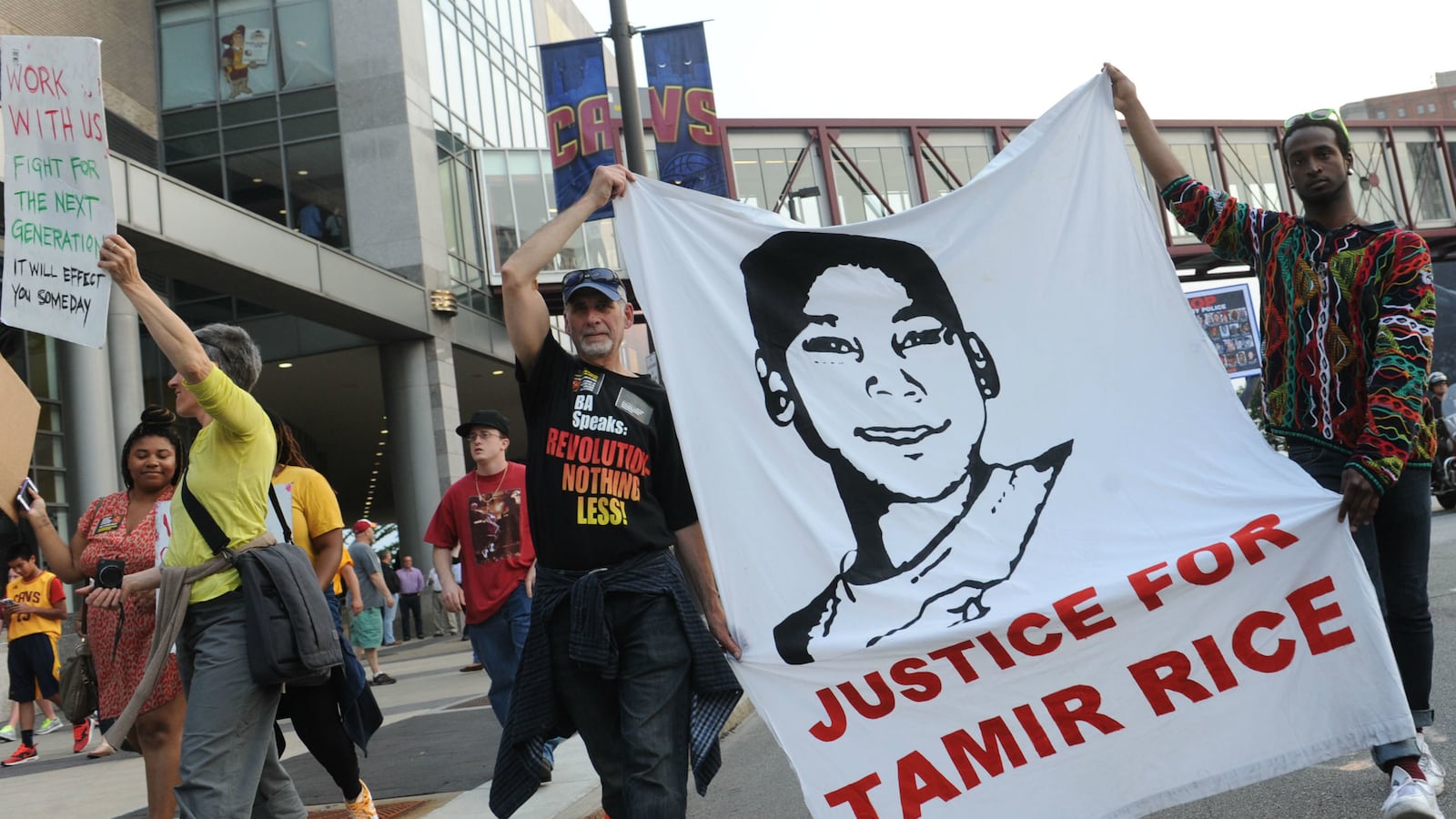A year after a 12-year-old black boy was killed by a white Cleveland police officer, two independent reports have concluded that the fatal shooting did not violate the boy’s constutional rights. Tamir Rice was playing with a pellet gun in a public park when a squad car approached him.
He was killed within seconds.
Retired FBI agent Kimberly Crawford and Denver prosecutor S. Lamar Sims conducted the investigative reviews, requested by the Cuyahoga County district attorney. Both are well-regarded use-of-force experts. Both determined that a rookie police officer acted reasonably. The non-binding results were released Saturday evening.
“There can be no doubt that Rice’s death was tragic and, indeed, when one considers his age, heartbreaking,” Sims wrote in his report. “However, I conclude that Officer Loehmann’s belief that Rice posed a threat of serious physical harm or death was objectively reasonable as was his response to that perceived threat.”
In the wake of the incident last November, activists mounted protests and demanded charges be levied against Officer Timothy Loehmann. A group of local attorneys used an obscure Ohio law to ask a court to find probable cause, after the local prosecutor failed to move swiftly. At the time, Prosecutor Timothy J. McGinty said the action was irrelevant to his investigation and planned to present evidence to a grand jury.
“We are not reaching any conclusions from these reports,” Prosecutor Timothy J. McGinty said in a statement Saturday. “The gathering of evidence continues, and the grand jury will evaluate it all.”
He said the reports were a part of his promise to be “as public and transparent as possible.”
The City of Cleveland is negotiating a consent decree with the Department of Justice, aimed at reforming the police department after DOJ investigators found local law enforcement had engaged in “patterns and practices” that denied civil rights. That investigation was launched prior to the death of Rice. The force is one of about two-dozen in the nation under DOJ investigation or active federal monitoring.
In the Rice case, outside investigators examined surveillance video which showed Rice reaching toward his waistband.
“If the hands move in the directions of a ‘high risk area’—an area where a weapon may be concealed—such as inside a jacket, towards the waistband of pants or under the seat of a car, well-trained officers will immediately identify this as a serious threat,” Crawford said.
Loehmann was previously fired from a nearby department after repeatedly failing field and firearms training. The City of Cleveland never reviewed that information before hiring him as a patrolman.
Law enforcement officials said the Loehmann and his partner were responding to a 911 call about a man with a gun. They were not told that the caller thought the gun was likely fake and that the suspect was a child. Loehmann said he believed the gun was real and ordered the boy to put the toy down several times. Rice was shot within two seconds of the encounter and died the following day.
Loehmann was heard on dispatch tapes describing the baby-faced boy as a black male in his twenties.
Retired FBI agent Kimberly Crawford decided that Loehmann’s use of force did not violate the child’s constitutional rights and that the officer “had no information to suggest the weapon was anything but a real handgun, and the speed with which the confrontation progressed would not give the officer time to focus on the weapon.”
“It is my conclusion that Officer Loehmann’s use of deadly force falls within the realm of reasonableness under the dictates of the Fourth Amendment.”






